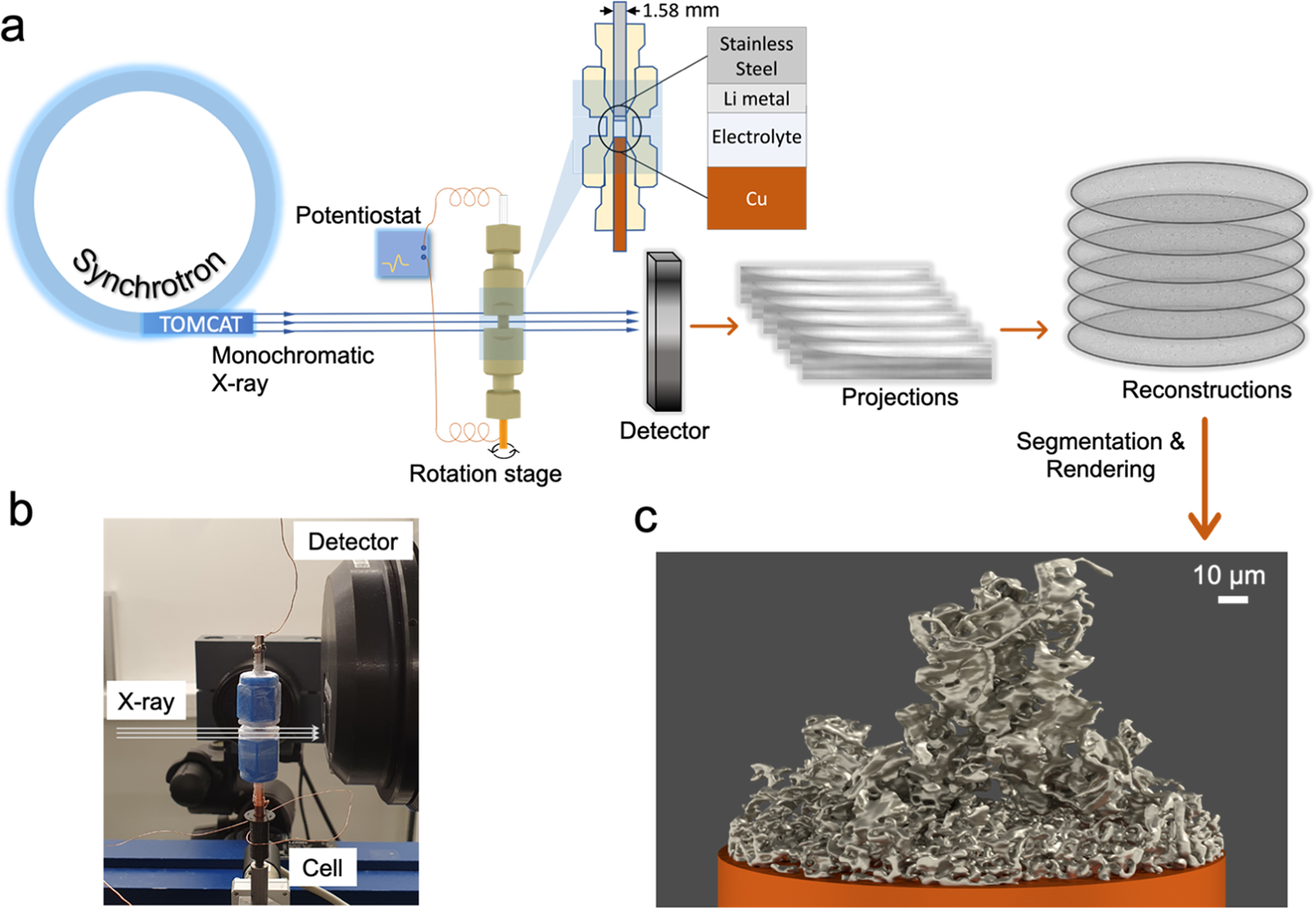2023-03-09 チャルマース工科大学
この技術は、より高密度で安全な電池を開発することで、今後リチウムイオン電池を置き換えることができると考えられています。
今後、この方法を使用して他のバッテリーコンセプトをテストし、高速でより詳細な微細構造を観察することを目指す予定です。
<関連情報>
- https://news.cision.com/chalmers/r/3d-battery-imaging-reveals-the-secret-real-time-life-of-lithium-metal-cells,c3725839
- https://www.nature.com/articles/s41467-023-36568-z
- https://onlinelibrary.wiley.com/doi/10.1002/advs.202003301
オペランドX線トモグラフィ顕微鏡によるリチウム金属のメッキ・剥離時の組織変化の解明 Investigating microstructure evolution of lithium metal during plating and stripping via operando X-ray tomographic microscopy
Matthew Sadd,Shizhao Xiong,Jacob R. Bowen,Federica Marone & Aleksandar Matic
Nature Communications Published:15 February 2023
DOI:https://doi.org/10.1038/s41467-023-36568-z

Abstract
Efficient lithium metal stripping and plating operation capable of maintaining electronic and ionic conductivity is crucial to develop safe lithium metal batteries. However, monitoring lithium metal microstructure evolution during cell cycling is challenging. Here, we report the development of an operando synchrotron X-ray tomographic microscopy method capable of probing in real-time the formation, growth, and dissolution of Li microstructures during the cycling of a Li||Cu cell containing a standard non-aqueous liquid electrolyte solution. The analyses of the operando X-ray tomographic microscopy measurements enable tracking the evolution of deposited Li metal as a function of time and applied current density and distinguishing the formation of electrochemically inactive Li from the active bulk of Li microstructures. Furthermore, in-depth analyses of the Li microstructures shed some light on the structural connectivity of deposited Li at different current densities as well as the formation mechanism of fast-growing fractal Li microstructures, which are ultimately responsible for cell failure.
リチウム金属の電解析出挙動に及ぼす交換電流密度の重要な役割に関する洞察 Insight into the Critical Role of Exchange Current Density on Electrodeposition Behavior of Lithium Metal
Yangyang Liu, Xieyu Xu, Matthew Sadd, Olesya O. Kapitanova, Victor A. Krivchenko, Jun Ban, Jialin Wang, Xingxing Jiao, Zhongxiao Song, Jiangxuan Song, Shizhao Xiong, Aleksandar Matic
Advanced Science Published: 06 January 2021
DOI:https://doi.org/10.1002/advs.202003301

Abstract
Due to an ultrahigh theoretical specific capacity of 3860 mAh g−1, lithium (Li) is regarded as the ultimate anode for high-energy-density batteries. However, the practical application of Li metal anode is hindered by safety concerns and low Coulombic efficiency both of which are resulted fromunavoidable dendrite growth during electrodeposition. This study focuses on a critical parameter for electrodeposition, the exchange current density, which has attracted only little attention in research on Li metal batteries. A phase-field model is presented to show the effect of exchange current density on electrodeposition behavior of Li. The results show that a uniform distribution of cathodic current density, hence uniform electrodeposition, on electrode is obtained with lower exchange current density. Furthermore, it is demonstrated that lower exchange current density contributes to form a larger critical radius of nucleation in the initial electrocrystallization that results in a dense deposition of Li, which is a foundation for improved Coulombic efficiency and dendrite-free morphology. The findings not only pave the way to practical rechargeable Li metal batteries but can also be translated to the design of stable metal anodes, e.g., for sodium (Na), magnesium (Mg), and zinc (Zn) batteries.



